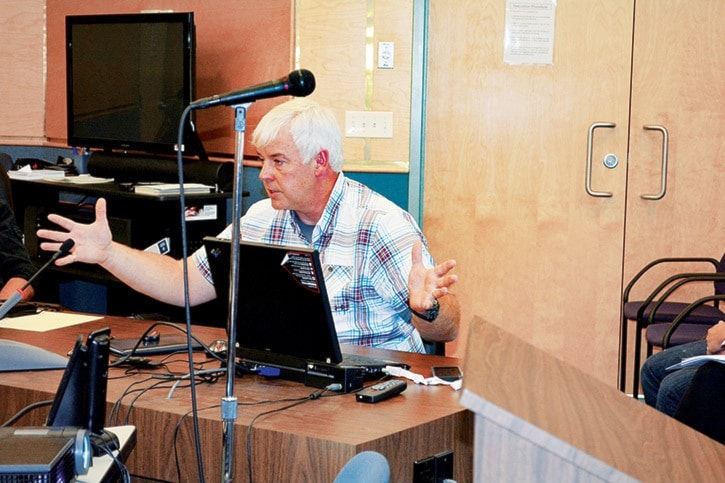Gibraltar Mine is seeking permission to increase its permitted discharge of water into the Fraser River by 50 per cent.
During a presentation to the Cariboo Regional District Friday, the mine’s general manager Richard Tremblay told the board the mine submitted an application for the increased discharge to the Ministry of Environment on June 16, 2015.
“We are currently sitting with 61 million cubic metres of water in the tailings facility and we only need 25 million to run the process,” Tremblay said.
The increase would see the mine discharging up to 5.4 million cubic metres annually.
Presently it is permitted to discharge water between November and April for a total of 3.6 million cubic metres a year.
However, there are conditions on the discharge in terms of temperature of the Fraser River and the quality of the water, Tremblay said.
Despite the annual discharge, the mine is still accumulating 2.5 to five million cubic metres of water on site through snow, rain and water that accumulates in the pits.
“Essentially you wind up filling up all the pits and there’s a set capacity for how much water you can store there,” Tremblay said, noting to keep raising the dam structures to store more and more water is not a sustainable approach.
Mayor Walt Cobb asked what would happen if the mine doesn’t get approval to discharge more water.
Under current conditions, Tremblay replied, the mine would be outside of its permit requirements by next spring.
In the meantime, however, the mine is looking at other options such as evaporators. It is also has a passive treatment project that uses wetlands, but that accounts for a small amount of the water.
Tremblay said the application is temporary because the mine wants to do some in-river sampling to make sure the water quality isn’t impacted by the increased discharge.
If it isn’t then Gibraltar will submit a permanent permit application in the fall of 2016, he added.
Because the effluent exceeds the aquatic life guidelines, specifically for sulphate, nitrate and molybdenum, the water has to be treated and is tested 100 metres downstream to ensure it meets the guidelines.
The permit also requires the company to test fish and invertebrates every three years, he said, noting sampling done twice since 2009 has detected no adverse effects.
When Area J Director Chief Roger William asked whether available capacity funding for First Nations from the company means communities can hire their own experts to analyze sampling data, Tremblay said yes.
Quesnel Mayor Bob Simpson asked if dry stacking is an alternative for Gibraltar because when the independent investigation panel review the Mount Polley Mine breach dry stacking was cited as an option.
Tremblay, however, said in this area water accumulation is an issue, while in other areas mines are trying to access water.
“When you’re a low grade core porphyry deposit, the tonnage you are dealing with makes dry stacking uneconomical,” he added.
When the mine was first opened water was pumped from the Fraser River through an 11-kilometre pipe.
In 2009, the mine began discharging water through the same pipe and as early as 2005 sought permission to discharge five million cubic metres of water annually.
Further information about the Gibraltar Mine discharge permit is available online at tasekomines.com.
